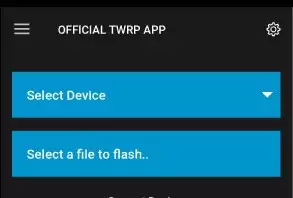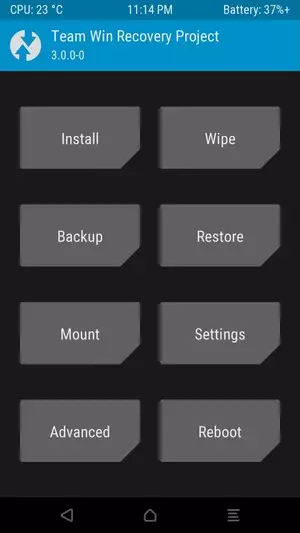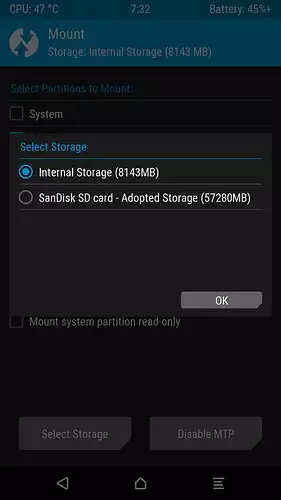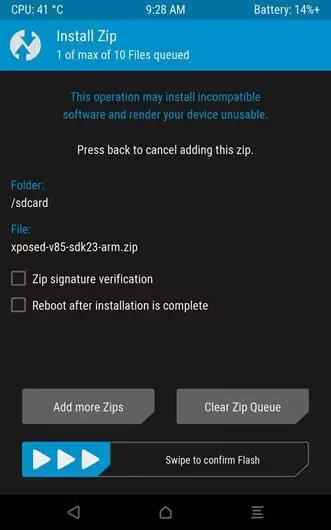Flash firmware on SingTech P501
Mobiles >> SingTech >> SingTech P501| Specifications | Reviews | Secret codes |
| Unlock phone | Root phone |
| Backup | Flash Firmware | Screenshot |
How to flash SingTech P501?
Why reinstall the firmware?
Errors begin to appear in the Android OS.
Some installed applications stop opening.
Many applications from the Play Market do not start.
The phone restarts or shuts down randomly.
The phone began to slow down a lot.
You are not satisfied with the functionality of the stock firmware.
Where can I find the firmware?
On the official website of the phone manufacturer.
On specialized services on which various developers lay out custom or official OS.
What should be done before installing the firmware?
Create a backup copy of user data, contacts and photos and transfer it to your computer.
Insert an SD card into your phone to write the firmware to it.
Remember your smartphone model.
Fully charge your phone. If the battery runs out during boot, the device will no longer turn on.
Download Firmware and Place it on the SD card.
Installing TWRP Recovery
Install the Official TWRP App from the Play Store on your phone.
When you start the application for the first time, you need to give consent to future manipulations, as well as to give consent to granting the application Superuser rights and click the 'OK' button.
On the next screen, select 'TWRP FLASH' and give the application root rights.

On the main screen of the application, the 'Select Device' drop-down list is available, in which you need to find and select the device model for installing the recovery.
After selecting a device, the program redirects the user to a web page to download the corresponding image file of the modified recovery environment. Download the suggested *.img file.
When the file is loaded, you need to return to the main screen of the Official TWRP App and press the 'Select a file to flash' button. Select the file downloaded in the previous step.
Press the 'FLASH TO RECOVERY' button and confirm your choice.
When the message 'Flash Completed Succsessfuly!' appears. Click 'OK'. The TWRP installation procedure can be considered complete.
Transfer the firmware and other necessary files to the SD card.
Insert a memory card into your phone.
To reboot in recovery, it is convenient to use a special item in the Official TWRP App menu, accessible by pressing the button with three stripes in the upper left corner of the main screen of the application. We open the menu, select the 'Reboot' item, and then tap on the 'REBOOT RECOVERY' button. The phone will reboot into the recovery environment automatically.
Firmware via TWRP

Before flashing, you need to clear the 'Cache' and 'Data' sections, press 'WIPE' on the main screen. You will delete all user data from the phone, this will avoid software errors and other problems.
Everything is ready to start flashing. Press the 'Install' button.

The file selection screen appears. At the very top is the 'Storage' button, select the location where the firmware file is located.
Select the storage to which the files were copied. Press the OK button.

Select the firmware file and click on it. A screen opens with a warning about possible negative consequences, you need to check the item 'Zip signature verification', which will avoid using corrupted files when writing to the phone's memory sections.
The procedure for writing files to the phone's memory will begin, this is accompanied by the appearance of inscriptions in the log field and the movement of the progress bar.
The completion of the installation procedure is indicated by the inscription 'Successful'.
Summary: Type: Mobile; Battery: Li-Ion 2100 mAh; CPU: Quad Core 1.3GHz; Smart Phone OS: Android 5.1; Dimensions: 145.6 x 72.8 x 8.35 mm; Formfactor: Bar; Keyboard: Screen; Sidekeys: Volume, Power; Softkeys: 3; Color: Yes; Colors: 16M; Other: Capacitive Touchscreen, Multitouch; Pixel aspect ratio: 1.50; Resolution: 360x640; Display PPI: 220; Screen Size: 5; Type: IPS; Audio: AAC, AAC+, AMR, AWB, MP3, Vorbis, FLAC, APE, MIDI, WAV; Camera: 8MP, 3264x2448; Other: LED Flash, Autofocus, Continuous Shooting, Digital Zoom, Digital Image Stabilization, Geo-Tagging, Panorama, High Dynamic Range (HDR), Touch Focus, Face Detection, White Balance, ISO, Exposure Compensation, Scene Mode, CMO ...
Comments, questions and answers on the flash firmware SingTech P501
Ask a question about SingTech P501




